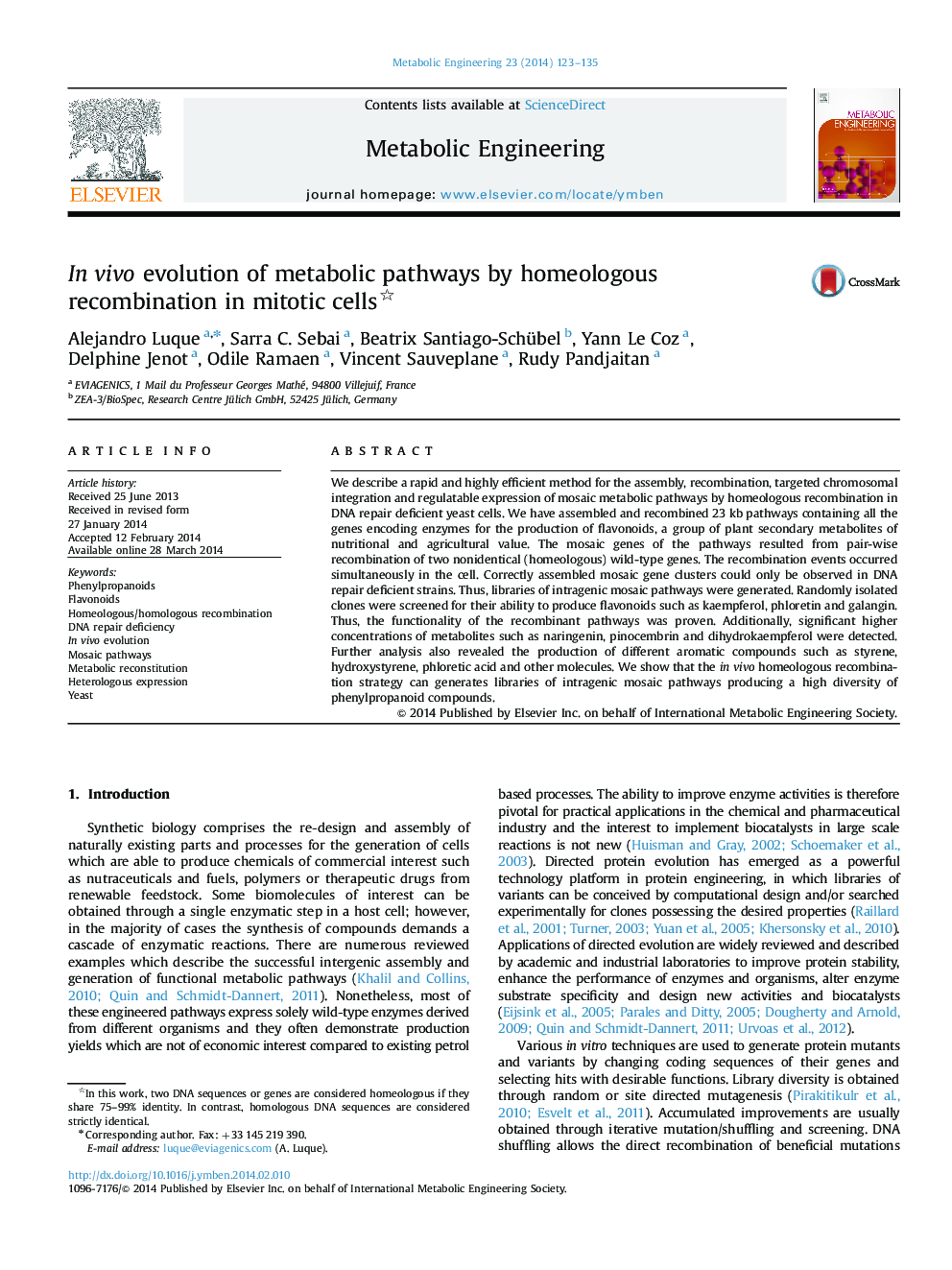| Article ID | Journal | Published Year | Pages | File Type |
|---|---|---|---|---|
| 31543 | Metabolic Engineering | 2014 | 13 Pages |
•Intragenic mosaic pathways were generated by in vivo recombination in yeast.•Mosaic pathways are functional and show differences in their production rate.•Differences in production rates are conditioned by gene mosaicism.•Assembled, recombined and integrated mosaics are regulatable in their expression.
We describe a rapid and highly efficient method for the assembly, recombination, targeted chromosomal integration and regulatable expression of mosaic metabolic pathways by homeologous recombination in DNA repair deficient yeast cells. We have assembled and recombined 23 kb pathways containing all the genes encoding enzymes for the production of flavonoids, a group of plant secondary metabolites of nutritional and agricultural value. The mosaic genes of the pathways resulted from pair-wise recombination of two nonidentical (homeologous) wild-type genes. The recombination events occurred simultaneously in the cell. Correctly assembled mosaic gene clusters could only be observed in DNA repair deficient strains. Thus, libraries of intragenic mosaic pathways were generated. Randomly isolated clones were screened for their ability to produce flavonoids such as kaempferol, phloretin and galangin. Thus, the functionality of the recombinant pathways was proven. Additionally, significant higher concentrations of metabolites such as naringenin, pinocembrin and dihydrokaempferol were detected. Further analysis also revealed the production of different aromatic compounds such as styrene, hydroxystyrene, phloretic acid and other molecules. We show that the in vivo homeologous recombination strategy can generates libraries of intragenic mosaic pathways producing a high diversity of phenylpropanoid compounds.
